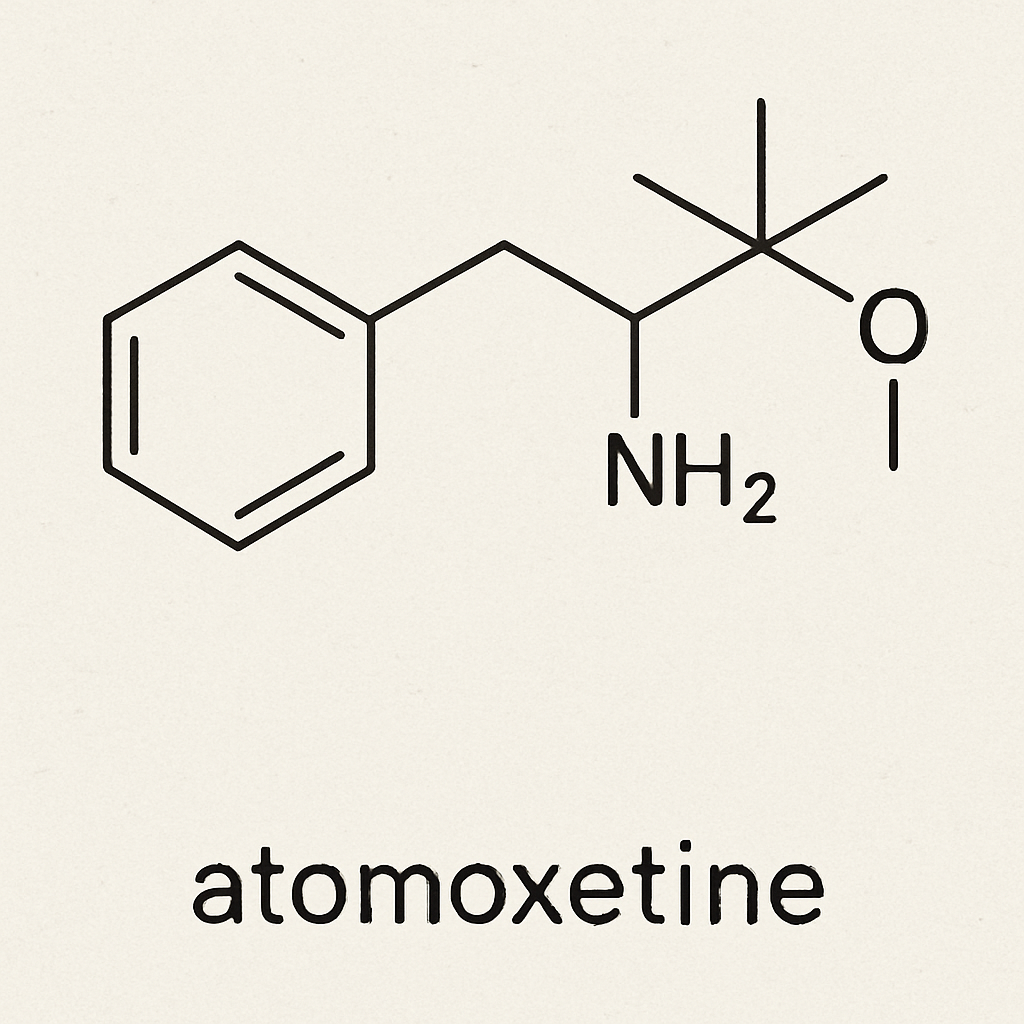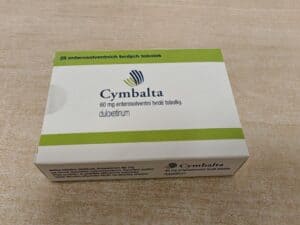In the world of ADHD treatment, atomoxetine suspension has emerged as an effective option for many individuals. Understanding how to properly use this medication, including the correct dosage and administration, can be crucial for achieving the best results while minimizing potential side effects. In this guide, we’ll explore the essentials of atomoxetine suspension, offering practical tips to ensure safe and effective use.

Atomoxetine is a medication prescribed primarily to treat Attention Deficit Hyperactivity Disorder (ADHD). Unlike stimulant medications, atomoxetine is a non-stimulant, which means it works differently by selectively inhibiting the reuptake of norepinephrine, a key neurotransmitter in the brain. This action helps improve attention span, focus, and behavioral issues in individuals with ADHD.
Mechanism of Action
Atomoxetine’s non-stimulant nature sets it apart from traditional ADHD medications. By targeting norepinephrine, it enhances attention and reduces impulsivity without the peaks and troughs often associated with stimulant medications. This steady influence can lead to a more consistent therapeutic effect, allowing individuals to maintain focus and attention throughout the day.
Who Can Benefit?
Atomoxetine is particularly beneficial for individuals who may not respond well to stimulant medications. It offers an alternative for those who experience significant side effects with stimulants or have a history of substance use disorder. Furthermore, its non-stimulant profile makes it suitable for individuals with co-existing anxiety disorders, as it is less likely to exacerbate anxiety symptoms.
Research and Efficacy
Numerous studies have demonstrated the efficacy of atomoxetine in managing ADHD symptoms. Clinical trials have shown significant improvements in attention, hyperactivity, and impulsivity in both children and adults. Furthermore, long-term studies suggest that atomoxetine can maintain its effectiveness over time, providing sustained benefits for chronic management of ADHD.
Benefits of Atomoxetine Suspension
Atomoxetine suspension offers several advantages over its tablet counterpart, particularly for individuals who have difficulty swallowing pills. The liquid form makes it easier to administer and allows for more flexible dosing adjustments based on individual needs.
Ease of Administration
For children and adults who struggle with swallowing pills, the liquid form of atomoxetine provides a straightforward solution. This ease of administration can lead to better adherence to the medication regimen, ensuring consistent therapeutic effects. Parents and caregivers find it easier to measure and administer, minimizing stress and increasing the likelihood of regular intake.
Flexible Dosing
The suspension form allows for precise dosing adjustments, catering to the unique needs of each individual. This flexibility is particularly valuable during the initial titration phase, where finding the optimal dose is crucial. With the ability to fine-tune doses, healthcare providers can tailor the treatment plan to achieve the best balance between efficacy and tolerability.
Potential for Fewer Gastrointestinal Issues
Some individuals experience gastrointestinal discomfort with tablet forms of medication. The suspension may reduce this issue, as it can be administered with food or in smaller, more manageable increments. This can lead to improved tolerability and a more favorable side effect profile, making it a preferred choice for those sensitive to medication-induced stomach upset.
Understanding Dosage

Determining the right dosage of atomoxetine is vital for its effectiveness and minimizing side effects. Dosage may vary based on age, weight, and individual response to the medication.
Recommended Dosage for Children and Adolescents
For children and adolescents, the initial dose typically starts at a low level and is gradually increased. The general guideline is to begin with approximately 0.5 mg per kilogram of body weight. After a minimum of three days, the dosage may be increased to about 1.2 mg/kg/day, depending on the individual’s response and tolerance.
Initial Titration Phase
During the initial phase, careful monitoring is essential. This gradual increase allows healthcare providers to observe the child’s response and make necessary adjustments. Parents should be vigilant for any signs of improvement or adverse reactions, reporting these to their healthcare provider promptly to facilitate timely dose adjustments.
Monitoring Growth and Development
Regular check-ins with a healthcare provider are crucial during treatment, as atomoxetine can impact growth and development. Monitoring height, weight, and overall health ensures that the medication does not adversely affect the child’s physical development. Adjustments can be made based on these observations to maintain a healthy balance between treatment efficacy and growth.
Parental Involvement
Parents play a key role in the effective management of ADHD with atomoxetine. Keeping a detailed record of the child’s behavior, mood changes, and any side effects can provide valuable insights to healthcare providers. Active communication with the provider can enhance the overall treatment experience, ensuring that the child’s needs are met efficiently.
Recommended Dosage for Adults
In adults, the starting dose is often around 40 mg per day, which may be increased after three days to a target dose of approximately 80 mg per day. If necessary, the dosage can be further increased, but it should not exceed 100 mg per day.
Dosage Adjustments Based on Response
Adults may require different dosing strategies based on their individual response to the medication. Some may achieve optimal symptom control at lower doses, while others may require higher doses for effectiveness. Regular assessment of symptoms and side effects allows for personalized dosing adjustments, ensuring the best therapeutic outcomes.
Addressing Tolerability
Adults may experience different side effects compared to children, such as increased fatigue or changes in appetite. Addressing these side effects through dose adjustments or timing of administration can improve tolerability. Consulting with a healthcare provider can help identify strategies to mitigate these effects, enhancing the overall treatment experience.
Lifestyle Considerations
Adults managing ADHD often balance medication with work, family, and social responsibilities. Understanding how atomoxetine fits into their daily routine is crucial for adherence. Discussions with healthcare providers about lifestyle factors, such as meal times and activity levels, can lead to a more integrated approach to treatment.
Adjustments and Monitoring
It’s essential to work closely with a healthcare provider to monitor the response to atomoxetine and make any necessary adjustments. Regular follow-ups allow for the assessment of both efficacy and side effects, ensuring the optimal therapeutic outcome.
Establishing a Monitoring Schedule
Creating a structured monitoring schedule helps track the effectiveness of the medication. Regular appointments with the healthcare provider, combined with self-assessment tools, can provide a comprehensive view of progress. This proactive approach allows for timely interventions and adjustments, maximizing the benefits of atomoxetine.
Identifying and Managing Side Effects
Side effects are a common concern with any medication. Early identification and management of side effects can prevent complications and improve adherence. Healthcare providers may recommend lifestyle changes or additional medications to address side effects, ensuring a smoother treatment journey.
Collaborative Care Approach
A collaborative approach between the patient, family, and healthcare provider fosters a supportive environment for treatment. Open communication and shared decision-making empower individuals to take an active role in their treatment, leading to more personalized care and improved outcomes.
Tips for Administering Atomoxetine Suspension
Administering atomoxetine suspension correctly is key to maximizing its benefits. Here are some tips for effective administration:
Using a Proper Measuring Device
Always use a proper measuring device, such as an oral syringe or a medicine cup, to ensure accurate dosing. Household teaspoons are not reliable for measuring medication.
Importance of Accuracy
Accurate dosing is critical to achieving the desired therapeutic effects of atomoxetine. Even small deviations from the prescribed dose can impact effectiveness or increase the risk of side effects. Using a calibrated measuring device ensures precision and consistency, supporting optimal treatment outcomes.
Training and Education
Educating caregivers and patients on the correct use of measuring devices can prevent dosing errors. Demonstrations by healthcare providers or pharmacists can build confidence and competence in measuring the correct dose. Providing written instructions or visual aids can further reinforce proper techniques.
Maintaining Equipment
Regularly checking and maintaining measuring devices can prevent inaccuracies. Cleaning the devices after each use and replacing them as needed ensures hygiene and accuracy. This simple practice can contribute significantly to the overall effectiveness of the treatment regimen.
Consistency is Key
Try to administer the medication at the same time each day to maintain consistent levels in the bloodstream, which helps improve its effectiveness.
Establishing a Routine
Incorporating atomoxetine administration into a daily routine enhances adherence and effectiveness. Setting reminders or linking medication intake to daily activities, such as meals or bedtime, can create a consistent schedule. Over time, this routine becomes second nature, reducing the likelihood of missed doses.
Impact on Therapeutic Outcomes
Consistent medication timing helps maintain steady drug levels, enhancing symptom control throughout the day. Irregular intake can lead to fluctuations in drug levels, affecting the medication’s efficacy. Sticking to a routine supports stable symptom management, contributing to a smoother treatment experience.
Adjustments for Lifestyle Changes
Life events or changes in schedule may necessitate adjustments in medication timing. Discussing these changes with a healthcare provider ensures that the medication continues to be effective. Flexibility in timing can accommodate varying daily demands while maintaining therapeutic benefits.
With or Without Food?
Atomoxetine can be taken with or without food. However, taking it with food may help reduce stomach upset, a common side effect for some individuals.
Understanding Food Interactions
While atomoxetine can be taken with or without food, understanding how food affects absorption can guide administration. Some individuals find that taking the medication with a substantial meal reduces gastrointestinal side effects. Experimenting with timing and food combinations can help identify the most comfortable approach.
Personalized Approach to Administration
Each individual’s response to medication may vary, necessitating a personalized approach. Keeping a diary of food intake and symptom response can provide insights into the best administration method. Collaborating with a healthcare provider to refine this approach ensures optimal comfort and effectiveness.
Long-Term Management Strategies
For those who experience persistent side effects, ongoing discussions with healthcare providers can lead to long-term management strategies. Adjustments in meal timing, portion sizes, or medication timing may alleviate discomfort. Tailoring the approach to individual needs can enhance adherence and overall satisfaction with the treatment.
Avoiding Missed Doses
If a dose is missed, take it as soon as you remember. If it’s almost time for the next dose, skip the missed dose and continue with your regular schedule. Do not double up on doses.
Strategies to Prevent Missed Doses
Establishing reminders through alarms, smartphone apps, or calendar alerts can reduce the likelihood of missed doses. Incorporating medication intake into daily habits, such as brushing teeth or having breakfast, can create a natural reminder. Consistency and routine are key in minimizing missed doses.
Handling Missed Doses
Understanding how to handle missed doses prevents potential complications. If a dose is missed, taking it as soon as remembered can maintain therapeutic levels. However, doubling up on doses should be avoided, as it can lead to increased side effects or adverse reactions.
Communication with Healthcare Providers
Informing healthcare providers about missed doses can provide insights into potential adjustments needed in the treatment plan. Ongoing communication allows for a collaborative approach to managing missed doses, ensuring continued effectiveness and safety of the medication.
Common Side Effects of Atomoxetine

by Europeana (https://unsplash.com/@europeana)
While atomoxetine is generally well-tolerated, some individuals may experience side effects. Being aware of these can help in managing them effectively.
Mild Side Effects
Common mild side effects include stomach upset, nausea, vomiting, decreased appetite, and fatigue. These often improve as the body adjusts to the medication.
Understanding Mild Side Effects
Mild side effects are a normal part of the body’s adjustment to new medication. Educating patients and caregivers about these expected effects can alleviate concerns and promote adherence. Knowing that these symptoms typically resolve over time can provide reassurance and encourage continued use of the medication.
Strategies for Management
Simple lifestyle changes can help manage mild side effects. Taking medication with food, staying hydrated, and getting adequate rest can reduce symptoms like nausea and fatigue. Collaborating with healthcare providers to identify effective management strategies can enhance comfort during the initial treatment phase.
Monitoring and Reporting
Keeping track of side effects in a journal can provide valuable information for healthcare providers. Reporting these effects during follow-up appointments allows for timely interventions and adjustments. This proactive approach helps optimize the treatment experience and minimizes discomfort.
Serious Side Effects
In rare cases, more serious side effects can occur, such as mood swings, increased heart rate, or liver problems. If you or your child experience symptoms like jaundice, dark urine, or severe mood changes, contact your healthcare provider immediately.
Identifying Serious Side Effects
Understanding the signs of serious side effects is crucial for timely intervention. Symptoms such as unexplained mood changes, yellowing of the skin, or significant changes in heart rate should prompt immediate medical attention. Educating patients and caregivers about these warning signs can facilitate rapid response and prevent complications.
Importance of Prompt Action
Promptly addressing serious side effects can prevent long-term health issues. Immediate consultation with healthcare providers allows for evaluation and necessary changes in the treatment plan. This proactive approach ensures patient safety and maintains the therapeutic benefits of atomoxetine.
Collaboration with Healthcare Providers
Collaborating with healthcare providers to manage serious side effects ensures comprehensive care. Providers can offer alternative treatment options or additional interventions to address these effects. Open communication and a collaborative approach contribute to a safer and more effective treatment experience.
Precautions and Considerations
Before starting atomoxetine, consider these important precautions:
Allergies
Inform your doctor of any known allergies, especially to atomoxetine or its components, as this medication may contain inactive ingredients that can cause allergic reactions.
Assessing Allergy Risk
Evaluating potential allergy risks before starting atomoxetine is crucial for patient safety. A thorough review of known allergies and previous reactions to medications can guide decision-making. Healthcare providers may conduct allergy tests or recommend alternative treatments if necessary.
Recognizing Allergic Reactions
Understanding the signs of an allergic reaction, such as rash, itching, or difficulty breathing, can facilitate rapid response. Patients and caregivers should be informed about these symptoms and encouraged to seek immediate medical attention if they occur. Early intervention can prevent severe allergic reactions and ensure patient safety.
Preventive Measures
Preventive measures, such as pre-medication allergy testing or using antihistamines, can reduce the risk of allergic reactions. Collaborating with healthcare providers to develop a prevention plan ensures a safer treatment experience. This proactive approach supports continued use of atomoxetine with minimal risk.
Medical History
Provide a complete medical history, particularly any history of heart problems, high blood pressure, liver issues, or mental/mood disorders, as these conditions may require special monitoring or dosage adjustments.
Comprehensive Health Assessment
A thorough health assessment prior to starting atomoxetine helps identify potential risks. Reviewing medical history, including past and current health conditions, provides valuable insights into appropriate treatment strategies. This comprehensive evaluation ensures that atomoxetine is safe and suitable for the individual.
Tailoring Treatment Plans
Tailoring treatment plans based on medical history allows for personalized care. Healthcare providers can make informed decisions about dosing, monitoring, and additional interventions. This individualized approach enhances the safety and effectiveness of atomoxetine, promoting better outcomes.
Ongoing Monitoring and Adjustments
Regular monitoring and adjustments based on medical history are essential for long-term management. Follow-up appointments allow for the assessment of treatment response and the identification of any emerging concerns. This ongoing evaluation ensures that the treatment plan remains aligned with the individual’s health needs.
Interactions with Other Medications
Inform your healthcare provider of all medications and supplements you are taking, as atomoxetine can interact with other drugs, potentially altering its effectiveness or increasing side effects.
Understanding Drug Interactions
Comprehensive knowledge of potential drug interactions is essential for safe medication use. Atomoxetine can interact with various medications, such as antidepressants or antihypertensives, affecting their efficacy or leading to increased side effects. Patients should provide a complete list of current medications to healthcare providers for evaluation.
Managing Interactions
Healthcare providers can recommend strategies to manage drug interactions, such as adjusting doses or changing administration times. Collaborative discussions about potential interactions allow for informed decision-making and safer treatment outcomes. Regular updates on any changes in medication use ensure continued safety and effectiveness.
Importance of Communication
Open communication with healthcare providers about all medications and supplements is crucial. Patients should feel empowered to discuss any concerns or questions regarding potential interactions. This collaborative approach promotes a safe treatment experience and enhances overall patient satisfaction.
Conclusion
Atomoxetine suspension can be an effective part of ADHD treatment, offering flexibility and ease of administration. By understanding the appropriate dosage and administration tips, as well as being mindful of potential side effects, you can help ensure a safe and beneficial experience with this medication. Always consult with a healthcare provider for personalized advice and guidance tailored to your specific needs.
With the right approach, atomoxetine suspension can significantly contribute to managing ADHD symptoms, helping individuals lead more focused and balanced lives. By fostering a collaborative relationship with healthcare providers and staying informed about the medication, patients and caregivers can optimize treatment outcomes and improve quality of life.


